Counterfeit credit card numbers can cause financial distress for both consumers and merchants. Small businesses are particularly at risk, as fraudulent transactions can lead to high charge-backs and interruptions in operations. Consumers may also face financial and credit repercussions if their personal information is used to create a fake card. It’s important to be able to detect a fake debit or credit card to safeguard personal financial security online.
Key Takeaways: Fake Credit Card Numbers
- Counterfeit credit card numbers can lead to financial distress for consumers and businesses.
- Fraudulent transactions can result in charge-backs and operational interruptions for small businesses.
- Individuals may experience financial and credit repercussions if their personal information is used to create a fake card.
- Detecting fake debit or credit cards is essential for safeguarding personal financial security online.
- Stay vigilant and aware to prevent falling victim to counterfeit credit card scams.
Signs That a Debit or Credit Card Is Fake
When it comes to protecting your finances, being able to detect a fake debit or credit card is essential. Fraudulent cards can lead to financial loss and potential identity theft. By familiarizing yourself with the signs of a fake credit card, you can avoid falling victim to scams and protect your personal financial security.
Here are some common signs that may indicate a debit or credit card is fake:
- Unevenly spaced numbers or crooked numbers
- A mismatch between the account number and the card issuer
- Odd holograms or damaged signature panels
- Missing CVV codes
- Damage magnetic strips or missing chips
- Variation in the last four digits on the receipt
- Missing microprints or UV logos
Detecting these signs can help you identify counterfeit cards and take necessary precautions to safeguard your financial well-being. Remember that it’s always better to be proactive in protecting against fraud than dealing with the aftermath of a scam.
| Signs of a Fake Credit Card | How to Detect |
|---|---|
| Unevenly spaced numbers or crooked numbers | Visually inspect the card and look for any irregularities in number alignment. |
| A mismatch between the account number and the card issuer | Verify that the account number matches the issuing bank or financial institution. |
| Odd holograms or damaged signature panels | Examine the holograms and signature panel for any abnormalities or signs of tampering. |
| Missing CVV codes | Check for the presence of the CVV code on the back of the card. |
| Damage magnetic strips or missing chips | Ensure that the magnetic strip is intact and the chip is present and functional. |
| Variation in the last four digits on the receipt | Compare the last four digits on the receipt with the card number to ensure consistency. |
| Missing microprints or UV logos | Inspect the card under a UV light to verify the presence of microprints and UV logos. |
Remember, staying vigilant and regularly checking your credit card statements for any suspicious activity is crucial in protecting yourself against credit card fraud and maintaining your financial security.
How to Handle Credit Card Fraud
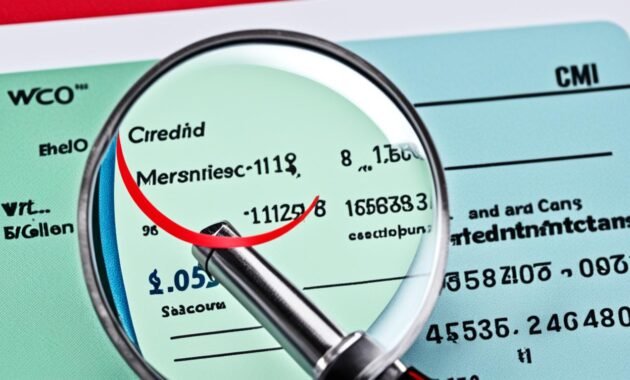
If you suspect credit card fraud, it’s crucial to take immediate action to protect your financial security. Here are the steps you should follow:
- Notify your bank or credit card issuer: Contact your financial institution right away to report the fraudulent activity. They will guide you through the process of securing your account and issuing a new card.
- Add a fraud alert to your credit report: Placing a fraud alert on your credit report helps prevent further unauthorized activity. This alert prompts creditors to take extra precautions when verifying your identity before approving new credit applications.
- Consider adding a security freeze to your credit file: A security freeze restricts access to your credit report, making it difficult for fraudsters to open new lines of credit in your name. This can provide an extra layer of protection against identity theft.
- Contact the Federal Trade Commission (FTC): Report the credit card fraud incident to the FTC through their website or by calling their toll-free hotline. The FTC collects information on fraud cases to help identify patterns and take legal action against offenders.
- File a report with your local law enforcement agency: Contact your local police department or sheriff’s office to file an official report. Provide them with as much information as you can, including any evidence or documentation related to the fraudulent activity.
- Dispute any fraudulent transactions: Reach out to your credit card company or bank to dispute any unauthorized charges. They will investigate the transactions and, if deemed fraudulent, remove them from your account.
Additionally, it’s recommended to use a credit monitoring service to stay vigilant against potential fraud. These services provide real-time alerts for any suspicious activity on your credit report, helping you detect and respond to credit card fraud promptly.
By taking these steps and staying proactive, you can minimize the impact of credit card fraud on your financial well-being.
Symmetry and Correlation
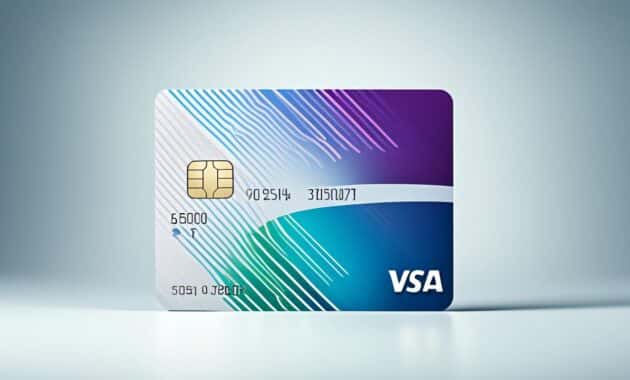
When it comes to detecting fake credit cards, paying attention to symmetry and correlation can be key. Counterfeit credit cards often exhibit irregularities in their appearance, such as unevenly spaced and skewed numbers. These imperfections are often a result of aftermarket embossing machines used by fraudsters to create fake cards.
In addition, another telltale sign of a fake credit card is when the account number does not correlate with the card issuer. This mismatch indicates fraudulent activity and should raise immediate concerns. By checking for symmetry and correlation between the numbers and the issuer, you can better identify potential counterfeit credit cards.
| Symmetry | Correlation |
|---|---|
| Unevenly spaced numbers | Mismatch between account number and issuer |
| Skewed numbers | |
Remember, when inspecting a credit card for authenticity, look for symmetry in the numbers and ensure they correlate with the appropriate issuer. These visual cues can help you distinguish genuine cards from counterfeit ones.
Magnetic Strip and Receipt Match
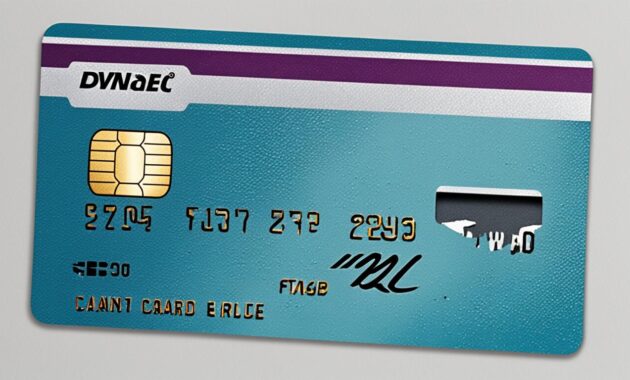
Fraudsters attempting to use fake credit cards often tamper with the magnetic strip. By damaging or altering the strip, they prevent it from being swiped, forcing the cashier to manually enter the altered card number. This irregularity can serve as a warning sign of potential fraud and should be carefully examined during transactions. Additionally, comparing the last four digits on the receipt with the card number can reveal inconsistencies and further aid in the identification of a counterfeit credit card.
Here is a table summarizing the key factors related to the damaged magnetic strip and receipt match:
| Signs of a Fake Credit Card | What to Look For |
|---|---|
| Damage or alteration to the magnetic strip | Manually entered card number by the cashier |
| Discrepancy between the last four digits on the receipt and the card number | Potential inconsistency indicating a fraudulent card |
Hologram and Signature Strip
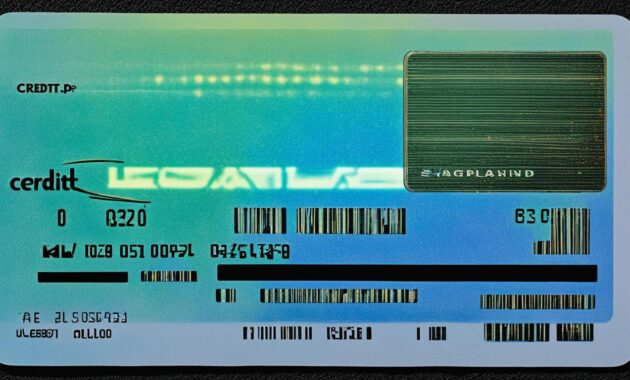
Genuine credit cards have holograms that appear three-dimensional and have distinct markings. These holograms serve as a security feature that helps verify the card’s authenticity. Counterfeit credit cards, on the other hand, may have holograms that appear dull or damaged. These compromised holograms are often a telltale sign of a fake card. It’s important to pay attention to the hologram’s quality and ensure it matches the hologram specifications of the legitimate card issuer, as different issuers may have their own unique hologram designs.
Remember to carefully inspect the hologram on any credit card you receive to detect any signs of tampering or damage.
In addition to the hologram, another area to examine is the signature strip located on the back of the card. Legitimate cards typically have a white signature strip that is smooth and intact. However, a fake card may have an altered or non-white signature strip, which can indicate potential fraud. It’s essential to check the condition and appearance of the signature strip to help evaluate the card’s authenticity.
By being vigilant and paying attention to the hologram and signature strip, individuals and businesses can better protect themselves from falling victim to counterfeit credit cards.
CVV Code and Chip Verification
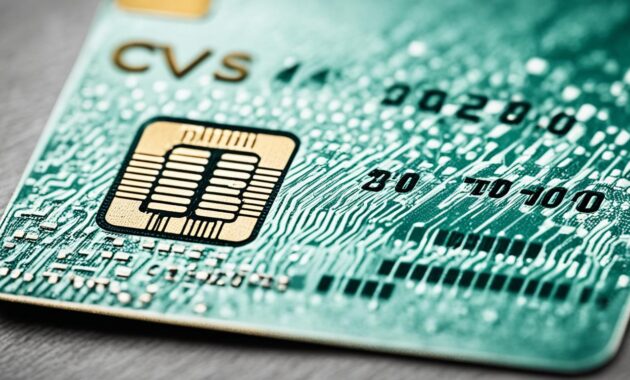
A vital aspect of identifying counterfeit credit cards is to verify the presence of essential security features. Legitimate credit cards are equipped with CVV codes and chips that serve as protective measures against fraud. However, the absence of a CVV code or a damaged magnetic strip or missing chip could indicate the card is fake.
Checking these elements is crucial in distinguishing genuine credit cards from counterfeits. By ensuring the presence and integrity of the CVV code and chip, individuals can protect themselves from potential financial risks and unauthorized transactions.
| Signs of a Genuine Credit Card | Potential Signs of a Counterfeit Credit Card |
|---|---|
| Pristine CVV code: The credit card displays an intact and legible CVV code, providing an added layer of security for online transactions. | Missing CVV code: A fake credit card may lack a CVV code, making it more susceptible to unauthorized use. |
| Intact chip: The credit card features an undamaged chip, allowing for secure contact or contactless transactions. | Missing chip: If there is no chip on the credit card or it appears to be tampered with, it could be a red flag for potential counterfeiting. |
| Functioning magnetic strip: The magnetic strip on the back of the credit card is intact and functional, enabling smooth swiping or reading. | Damaged magnetic strip: Fraudulent credit cards may have a damaged magnetic strip, requiring manual entry of card details, which can be indicative of a counterfeit. |
Verifying the presence of a CVV code and chip, as well as ensuring their integrity, is an integral part of identifying counterfeit credit cards. By paying attention to these critical elements, individuals can protect themselves and their finances from potential fraud.
Microprint and UV Logos
Most credit cards are equipped with additional security features such as microprints and UV logos. These features play a crucial role in verifying the authenticity of a credit card.
Microprints are tiny, intricately designed texts or images that are almost invisible to the naked eye. They are typically placed in specific locations on the credit card, such as the signature panel or around the card’s edges. Microprints are challenging to replicate and require specialized equipment and techniques.
The absence or presence of microprints on a credit card can raise red flags about its authenticity. Fake credit cards often lack microprints altogether or have microprints with missing or unreadable numbers.
Furthermore, UV logos are another significant security feature found on many credit cards. These logos are printed with special UV-ink that is visible only under a UV or black light. The UV logos serve as an additional layer of security, making it difficult for counterfeiters to replicate.
By using a UV or black light, it becomes possible to detect and verify the presence of UV logos on a credit card. This simple method is an effective way to ensure that the credit card is genuine.
| Features | Authentic Credit Card | Fake Credit Card |
|---|---|---|
| Microprints | Present, clear, and legible microprint numbers | Absent microprints or unreadable numbers |
| UV Logos | Visible under a UV or black light | Missing or non-visible UV logos |
Verifying the presence of microprints and UV logos on a credit card is a simple yet effective method to detect whether the card is genuine or fake.
Keep in mind that counterfeiters are becoming increasingly sophisticated in replicating credit cards. Therefore, it’s essential to stay vigilant and use multiple verification methods when assessing the authenticity of a credit card.
Characteristics of Fake Credit Cards
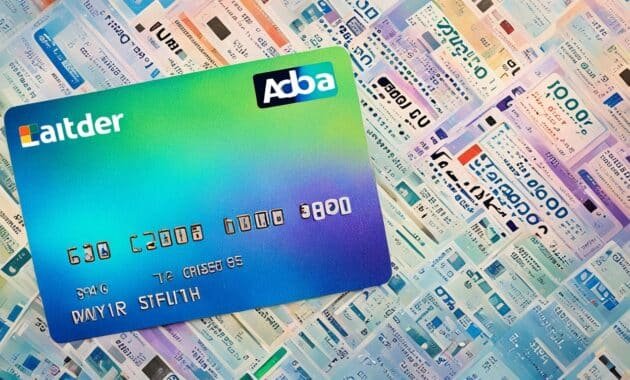
Fake credit cards exhibit several distinctive characteristics that can help in identifying them. By being aware of these signs, individuals and businesses can protect themselves from falling prey to counterfeit credit card scams.
Here are some key characteristics of fake credit cards:
- Numbers that are not evenly spaced or aligned
- Mismatched account numbers and card issuers
- Damage to holograms or signature panels
- Missing CVV codes
- Damage to the magnetic strip or missing chips
- Variation in the last four digits
- Missing microprints or UV logos
By identifying these characteristics, individuals and businesses can be more vigilant in verifying the authenticity of credit cards and preventing fraudulent transactions.
| Characteristic | Description |
|---|---|
| Unevenly spaced or aligned numbers | Fake credit cards may have numbers that are not evenly spaced or aligned, indicating a possible counterfeit. |
| Mismatched account numbers and card issuers | If the account number on the card does not match the card issuer, it could be a sign of a fake credit card. |
| Damage to holograms or signature panels | Fake credit cards may have damaged holograms or signature panels, indicating tampering or counterfeiting. |
| Missing CVV codes | A genuine credit card will have a CVV code, so the absence of one can indicate a fake card. |
| Damage to the magnetic strip or missing chips | If the magnetic strip is damaged or there are no chips on the card, it could be a fake credit card. |
| Variation in the last four digits | Fake credit cards may have inconsistency in the last four digits, suggesting counterfeit or fraudulent activity. |
| Missing microprints or UV logos | Legitimate credit cards have microprints and UV logos as additional security features. The absence or unreadable nature of these features can indicate a fake card. |
Also Read : Balance Transfer Tips for Credit Card Savvy
Conclusion
Detecting fake credit cards is crucial for safeguarding personal financial security online. With the rise in counterfeit credit card scams, it is essential to be aware of the signs of a fake card and take prompt action in case of fraud. By staying vigilant and informed, both individuals and businesses can protect themselves from potential financial and credit repercussions.
One of the key indicators of a fake credit card is unevenly spaced or crooked numbers. Mismatched account numbers, odd holograms, and damaged signature panels are also red flags to watch out for. Missing CVV codes, damaged magnetic strips, and missing chips are additional signs that a card may be counterfeit.
Remember to compare the last four digits on the receipt with the card number to ensure consistency. Check the hologram on the card to see if it appears three-dimensional and has distinct markings. Similarly, verify the authenticity of the signature strip on the back of the card. Look for microprints and UV logos, as fake credit cards often lack these security features.
By paying attention to these characteristics and taking immediate action in case of suspected fraud, you can protect your personal financial security and minimize the potential impact of counterfeit credit cards. Stay informed, be proactive, and prioritize your financial well-being to avoid falling victim to fake credit card scams.
FAQs
How can I identify fake credit card numbers?
Counterfeit credit card numbers can cause financial distress for both consumers and merchants. Small businesses are particularly at risk, as fraudulent transactions can lead to high charge-backs and interruptions in operations. Consumers may also face financial and credit repercussions if their personal information is used to create a fake card. It’s important to be able to detect a fake debit or credit card to safeguard personal financial security online.
What are the signs that a debit or credit card is fake?
Some signs that a debit or credit card may be fake include: unevenly spaced numbers or crooked numbers, a mismatch between the account number and card issuer, odd holograms or damaged signature panels, missing CVV codes, damaged magnetic strips or missing chips, variation in the last four digits on the receipt, and missing microprints or UV logos.
How should I handle credit card fraud?
If you suspect credit card fraud, take these steps promptly: notify your bank or credit card issuer, add a fraud alert to your credit report, consider adding a security freeze to your credit file, contact the Federal Trade Commission (FTC) to report the incident, file a report with your local law enforcement agency, and dispute any fraudulent transactions. It’s also recommended to use a credit monitoring service to keep a close eye on your credit.
How can symmetry and correlation help detect fake credit cards?
Fake credit cards often have unevenly spaced and skewed numbers due to aftermarket embossing machines. It’s also common for the account number to not match the card issuer, indicating fraud. Checking for symmetry and correlation can help identify fake credit cards.
How do I know if the magnetic strip and receipt match on a credit card?
Fraudsters may damage or alter the magnetic strip on fake credit cards to prevent them from being swiped. This will require the cashier to manually enter the altered card number, which can be a red flag. Comparing the last four digits on the receipt with the card number can also help identify a fake credit card.
What should I look for in the hologram and signature strip to determine if a credit card is fake?
Genuine credit cards have holograms that appear three-dimensional and have distinct markings. Counterfeit credit cards may have dull or damaged holograms. Checking the signature strip on the back of the card can also indicate authenticity, as a fake card may have an altered or non-white strip.
How can I verify the CVV code and chip on a credit card?
Legitimate credit cards have CVV codes that help reduce fraud. If a credit card is missing the CVV code or has a damaged magnetic strip or missing chip, it could be fake. Checking these elements is important in identifying counterfeit credit cards.
What are microprints and UV logos on credit cards and how can they help detect fakes?
Most credit cards have microprints and UV logos as additional security features. Fake credit cards often lack microprints or have missing or unreadable microprint numbers. UV logos can also be checked using a UV or black light to verify authenticity.
What are the characteristics of fake credit cards?
Fake credit cards may have numbers that are not evenly spaced or aligned, mismatched account numbers, damaged holograms or signature panels, missing CVV codes, damaged magnetic strips or missing chips, variation in the last four digits, missing microprints or UV logos. These characteristics can help identify counterfeit credit cards.
Why is it important to detect fake credit cards?
Detecting fake credit cards is crucial for safeguarding personal financial security online. By knowing the signs of a fake card and taking prompt action in case of fraud, individuals and businesses can protect themselves from financial and credit repercussions. Stay vigilant and aware to prevent falling victim to counterfeit credit card scams.
Source Links
- https://www.weststarbank.com/tools-and-resources/9-must-know-ways-to-spot-a-fake-credit-or-debit-card
- https://www.experian.com/blogs/ask-experian/how-to-spot-a-fake-debit-or-credit-card/
- https://www.linkedin.com/pulse/how-recognize-fake-credit-card-bankbychoice